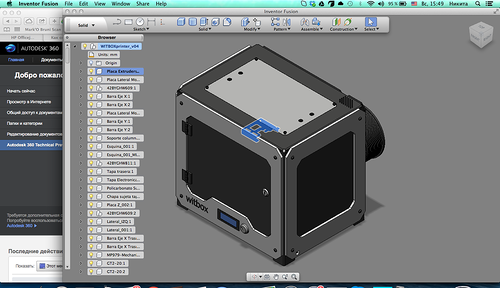Production of 3D printers in Europe. What the blonde birches are silent about ...
After the September trip to the MakerBot salon in New York, described in the Habré , I seriously got sick with 3D printing, visited all the 3D exhibitions that I could, I personally met with all the players on the market who I could (I didn't My beloved partner met), after which he decided “Everything, let's go! We go to 3D
Being, on the one hand, a person who is dreamy and enthusiastic, but on the other hand, a cynical and prudent cattle businessman, before diving into the industry, it was decided to shake vigorously the manufacturers of 3D printers before choosing an emphasis for future distribution.
I will not stop at this stage much, I will say only one thing: they “shook” uncomfortable questions, meetings, real tests, weighted price comparisons - companies from the top 10 brands that occupied the media space, did not consider the low level segment in principle because of strictly defined competence groups of people involved in distribution.
And so, in April of this year, we were thrown out in a wave in the Spanish town of Navarre, where I personally saw the European level of assembly of 3D printers at the bq factory, which I wanted to share with you, not forgetting the “cherry” at the end of the story.

')
The town where the bq factory producing the Witbox printers is located , as usual for Europe (and I was at many factories in Europe and China), is very small and expectedly romantic:
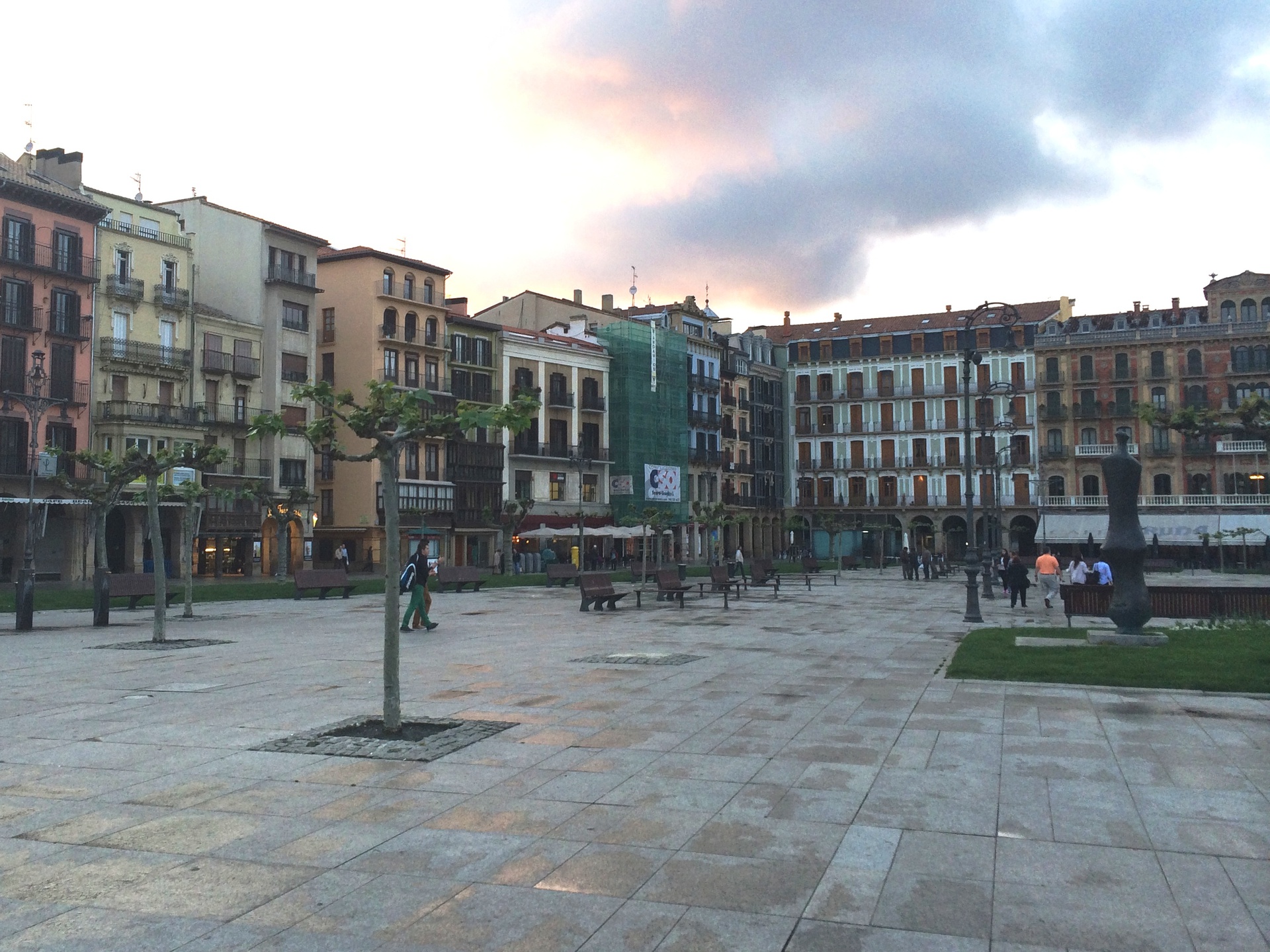
In the morning after arriving in the city - we ourselves went to the factory, the meeting was somewhat chaotic, because distributors from Italy and Colombia arrived at the bq that same day.
It was all the more interesting for me to see the production through the eyes of a person, for the arrival of whom there was no time to prepare (having built the Potemkin villages according to the custom known in Russia).
What can I say, after the Chinese cold, poorly lit shops with girls, wrapped in the warm with belongings on the desktops - the European assembly is always like a spruce oil for the soul.
Immediately striking: Space and Clean
We were conducted stage by stage throughout the production, allowing us to take general photographs without an approximation.
Below are the most interesting of them, in my humble opinion, with a few comments:

The first step in the production of assembled tables with guides, fixed inside the platform, and then fix the control electronics.
Under each printer there is a CHECK list , in which the collectors mark the operations performed, and the intermediate testers tick off whether or not there is a function at a certain stage (in the photo they are white leaves inside each Witbox printer):
External elements of the electronic filling - set the "blue-collar" guys on this line. they also test this electronics:
In the next room we found the FANUC Robodrill - essentially a large 3D printer, only a non-additive production format.
Seeing him, the engineer of our company, who had come for training, trembled and began excitedly to whisper in my ear that “this thing costs most of all here”, and this made me worry for no apparent reason.
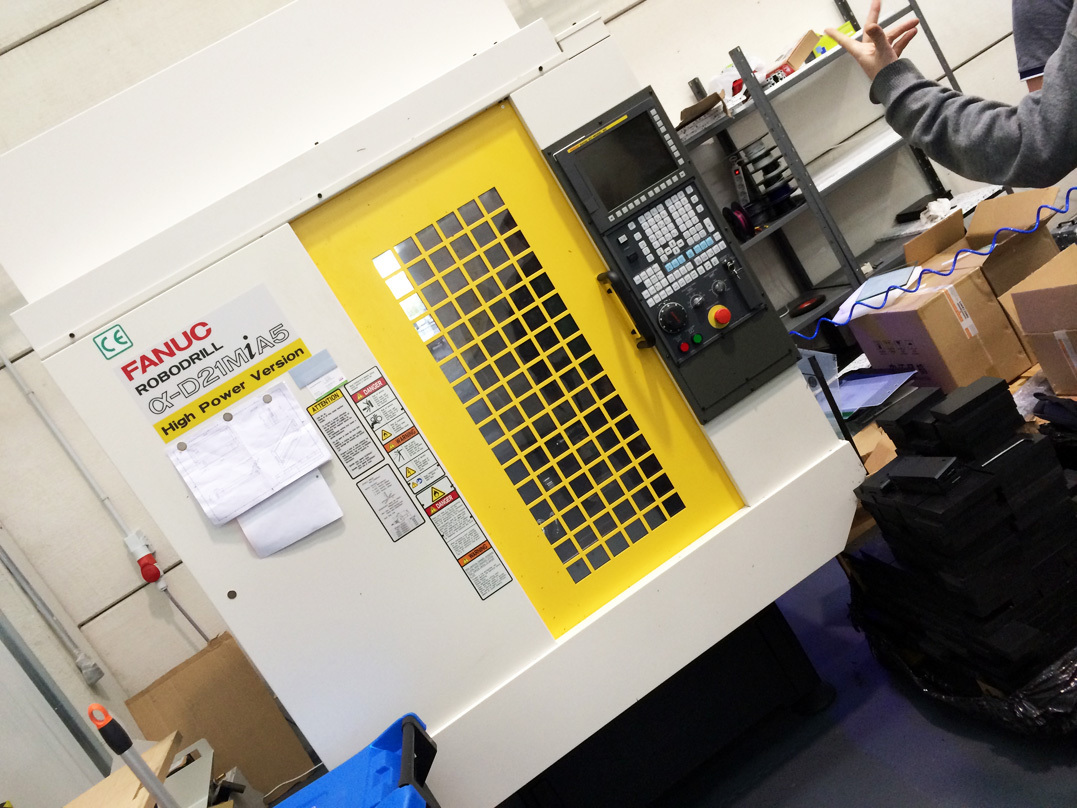
To our question: “What is it used for?” We were shown a stack of these spare parts stacked side by side.
This is a snap-in box for the printer’s electronic filling; the Spaniards in bq grind it themselves:
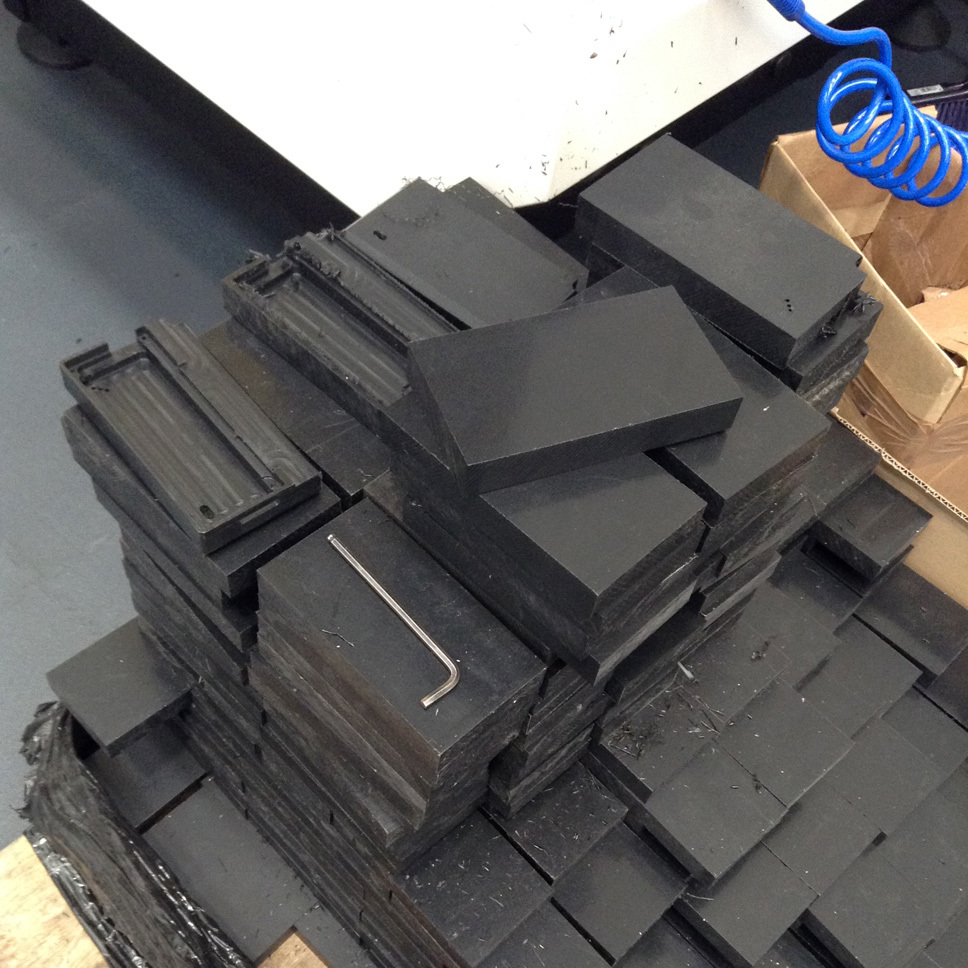
This was followed by a phrase that made me think:
“Previously, we printed these boards on our Witbox 3D printers, but with the growth of production, this became absolutely unjustified in terms of time costs”
The guys from Russia, manufacturers of 3D printers, often boasted to me that a lot of things from the spare parts for their “gadgets” are made on their own printers.
It can be concluded that the number of units being produced is hardly large in these specific cases and may indirectly indicate a small accumulated production experience.
Next to FANUC is the Laser Cutting Plotter , which makes the exterior bright panels for a future printer.
Maybe I called him wrong, but on me, an office rat, these kind of big cars, turning huge sheets into beautiful shapes, ready to install external panels with a logo on board, always make a fascinating impression.

Even before installing the panels, each printer starts printing a calibration model (below you will see a number of these printing Witboxes).
If the test is successful - the printer goes to the packaging. In this model, printed on this printer, is MANDATORY embedded in the box.
Does not pass the test - make an additional setting to the victorious.

Then I flinch again and for a long time fascinatedly looked at the bluish illumination of the print area, with side vision assessing an elegant solution for laying PLA-plastic without standard for most devices of this kind flip through the top:


On printers that have passed the test print, put external panels (yellow, black or white):

And then, with the help of such a manipulator, # Even the IgnoreKakNazakvatPolkom are thrown onto the finishing packaging table (in the photo, the manipulator allowed our engineer, who was very close to the like-minded Spaniards in the short time of our visit) to play around:
I liked EVERYTHING on the final packaging.
1. Double box - beautiful internal and shipping external:
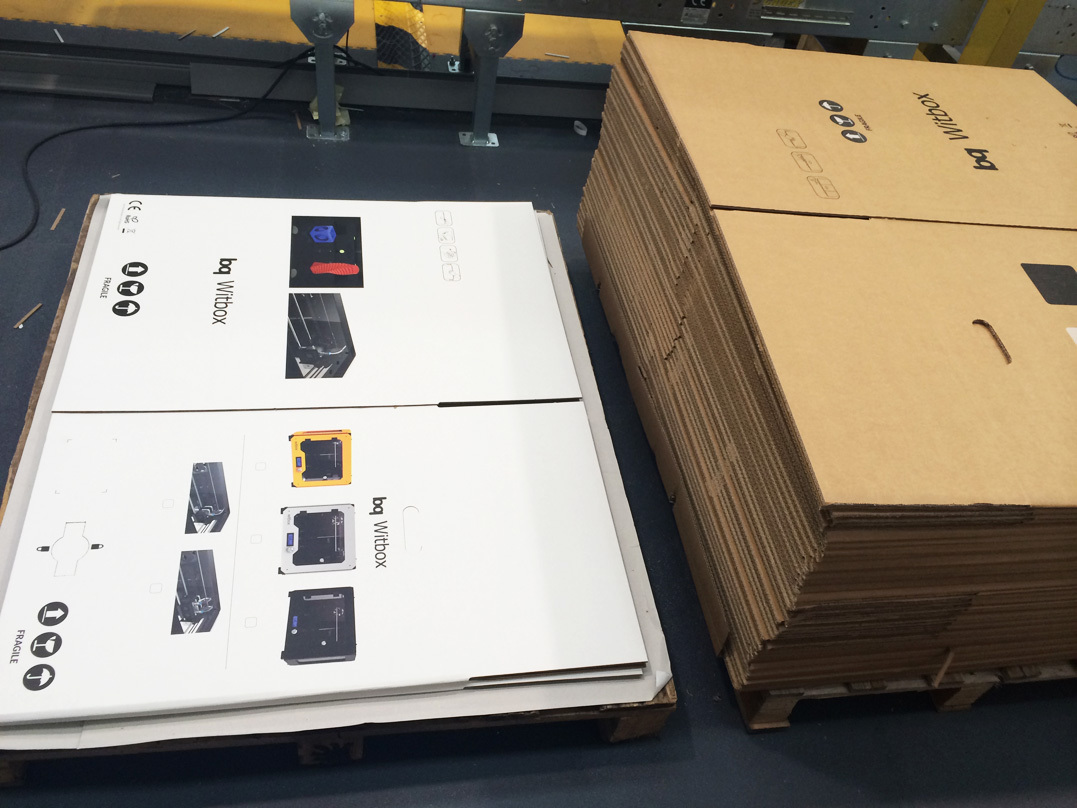
The guys from bq said that the printer in this package can withstand a drop of 1 meter:
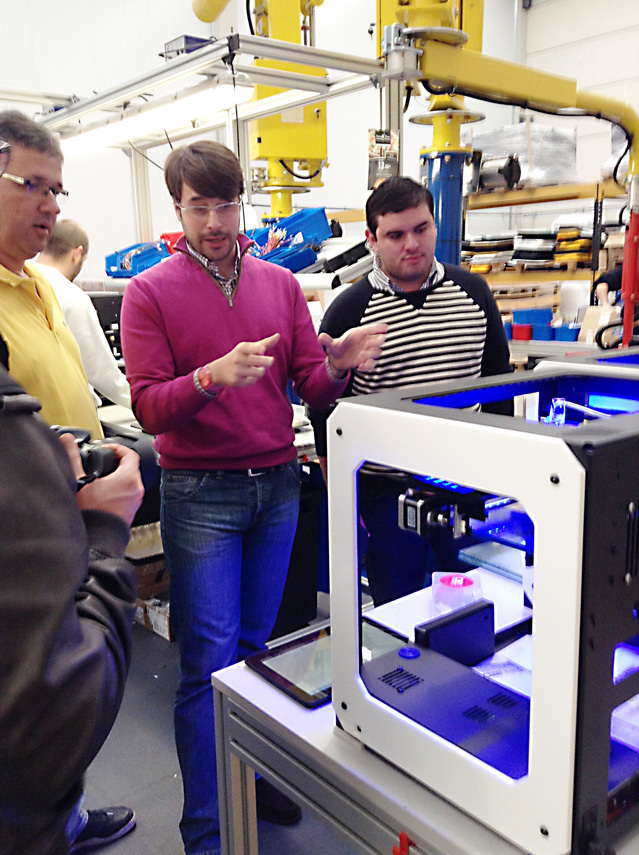
2. On the packaging table, in addition to the printer, the boxes are:
- PLA plastic coil (two for a Witbox printer with two extruders)
- 4GB SD card
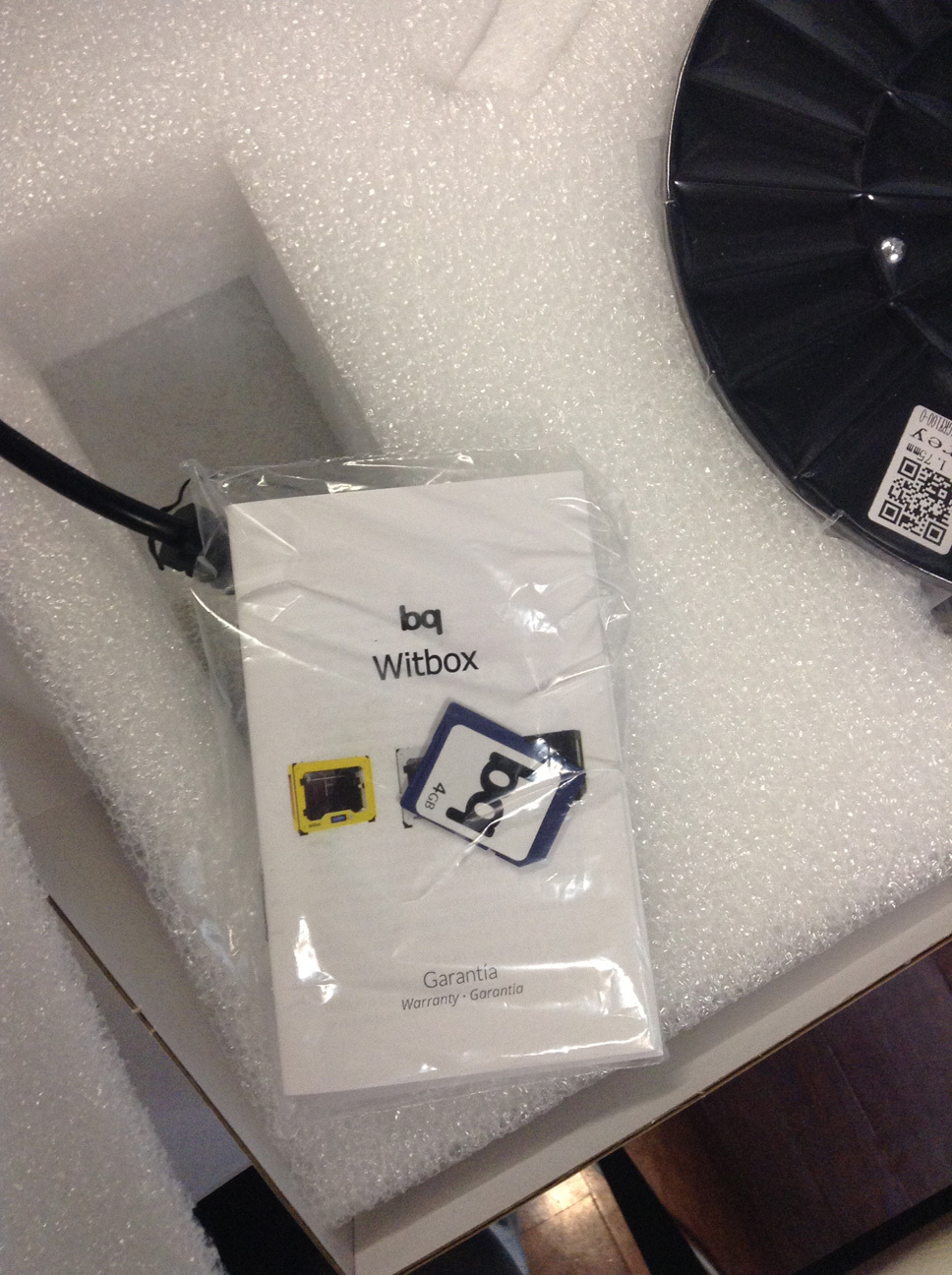
- Additional HOT END - an extruder nozzle (I almost burst into tears when I saw it, and framed it with a girly photo frame as a token of sincere gratitude for such attention to customers):
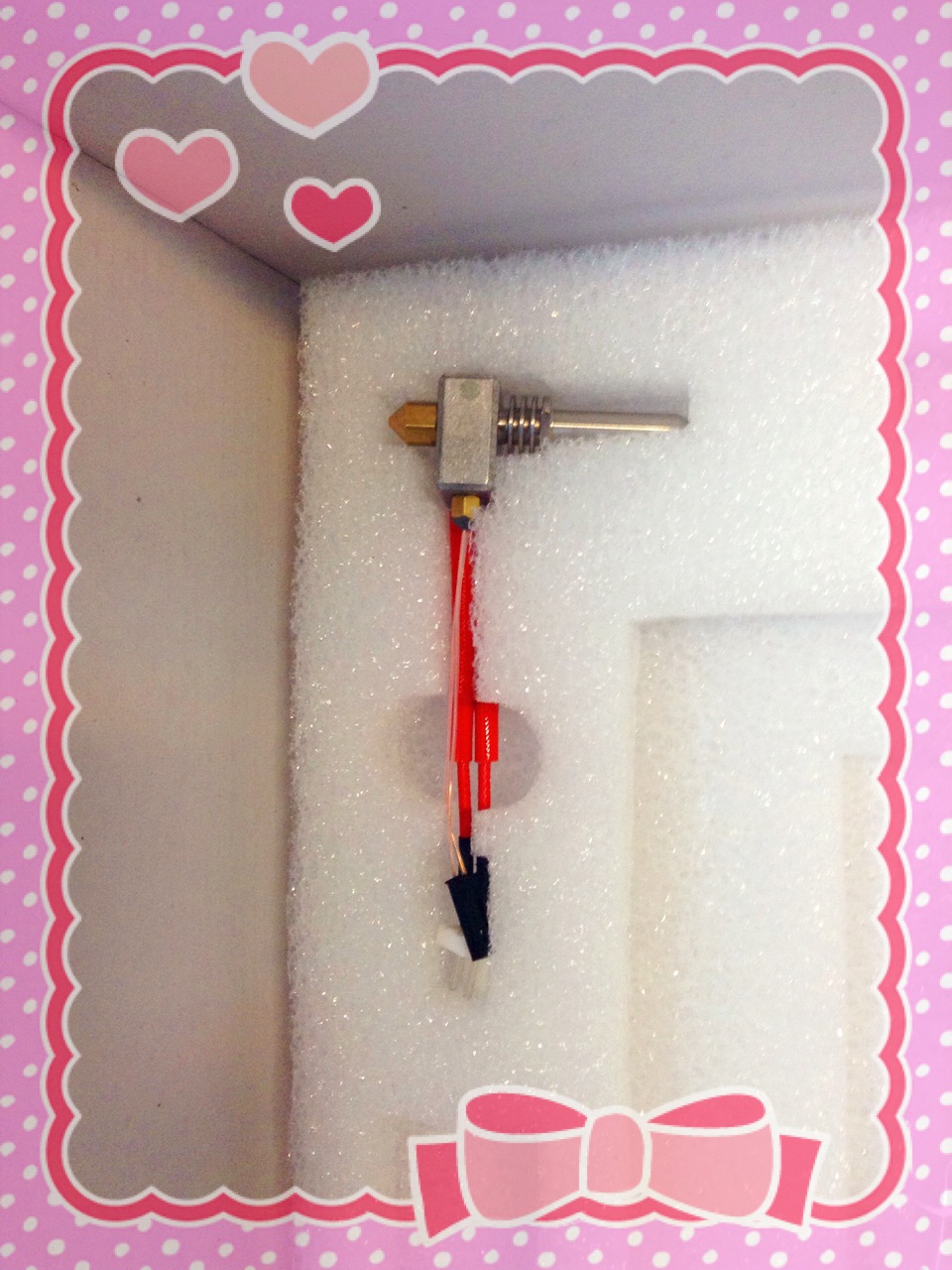
- Instruction and warranty card for 2 years of operation
3. As a result, printers are packaged in boxes, as I showed you in the photo above:
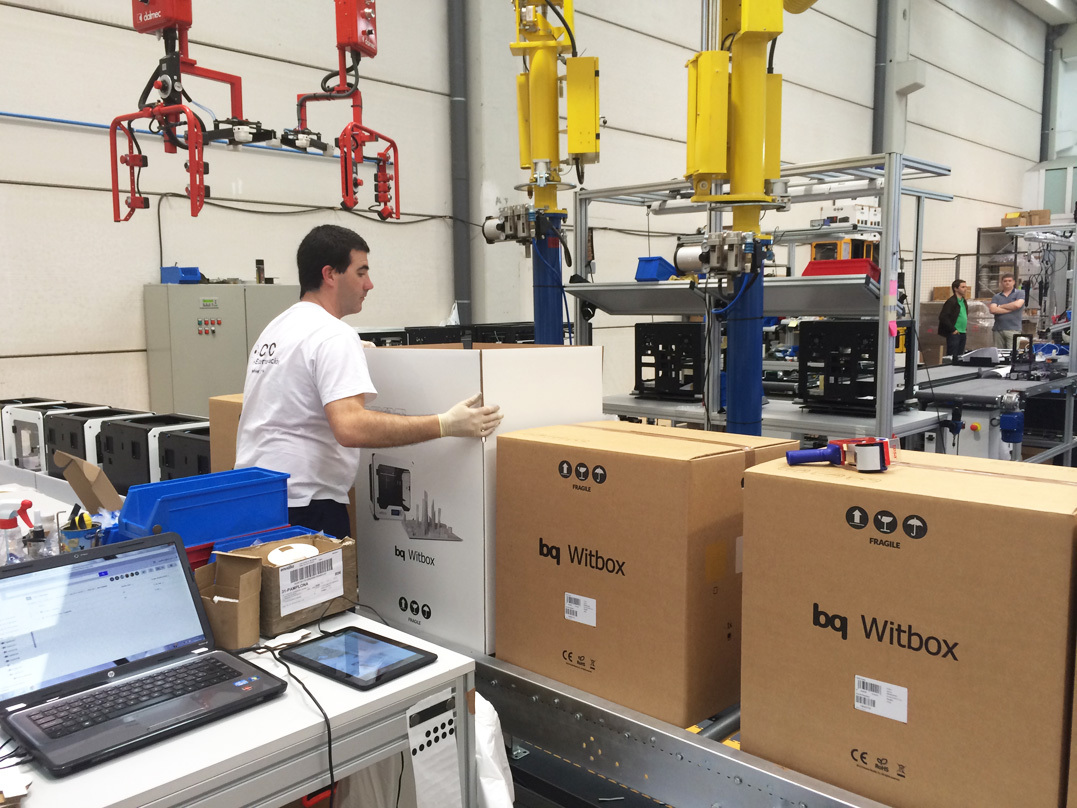
Are fixed with scotch:
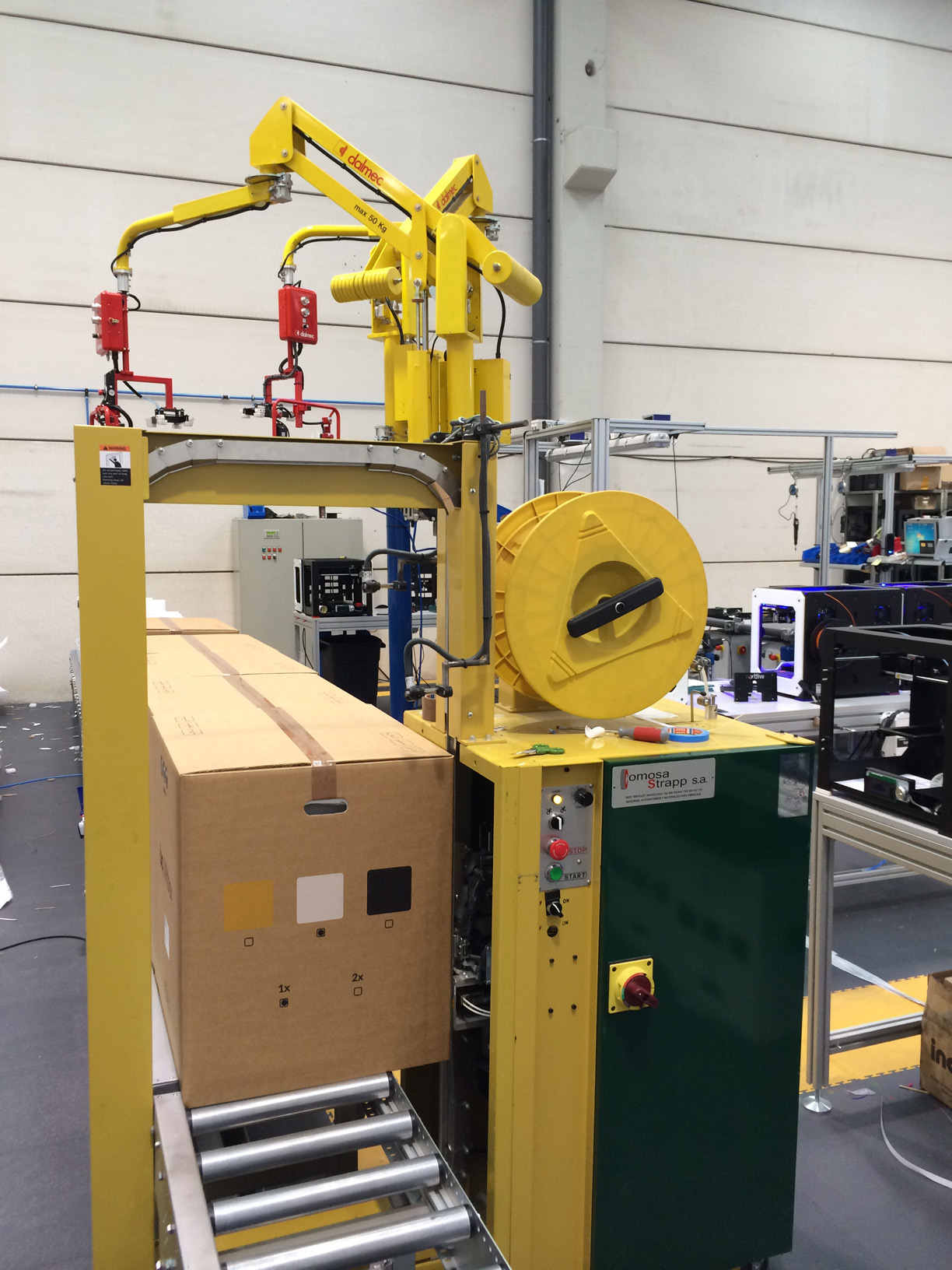
... and ready-made ones are stored for shipment to Madrid, the main warehouse bq
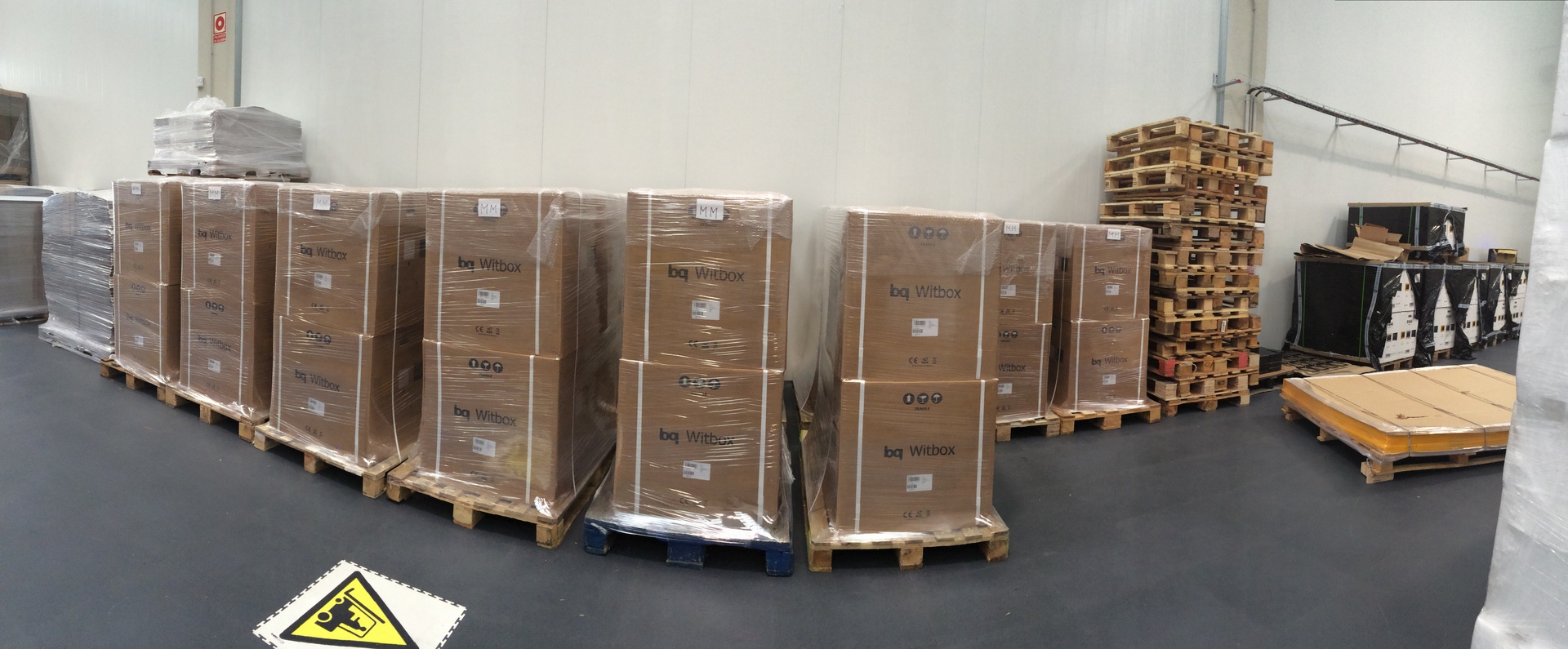
after the obligatory palletizing procedure:
In the morning - this (printed on the 3D printer Witbox, as evidenced by the inscription on board) loader
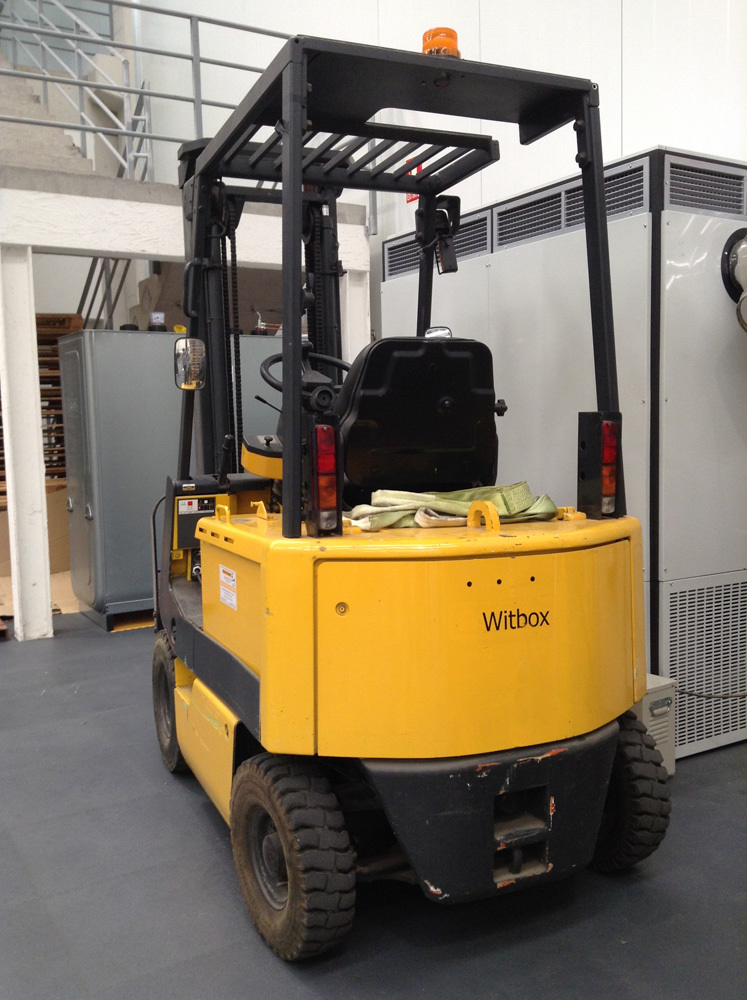
... will load them into the truck, going to sunny Madrid, so that the "swallows" will spread around the world ...

Code A curtain.
Why is the post itself hosted in the Open Source hub?
At the end of our trip, we asked the Europeans:
The answer of Mario and Antonio from bq threw me into complete confusion:
In this connection, the inquisitive inhabitants of Habr's POLL :
Being, on the one hand, a person who is dreamy and enthusiastic, but on the other hand, a cynical and prudent cattle businessman, before diving into the industry, it was decided to shake vigorously the manufacturers of 3D printers before choosing an emphasis for future distribution.
I will not stop at this stage much, I will say only one thing: they “shook” uncomfortable questions, meetings, real tests, weighted price comparisons - companies from the top 10 brands that occupied the media space, did not consider the low level segment in principle because of strictly defined competence groups of people involved in distribution.
And so, in April of this year, we were thrown out in a wave in the Spanish town of Navarre, where I personally saw the European level of assembly of 3D printers at the bq factory, which I wanted to share with you, not forgetting the “cherry” at the end of the story.

')
The town where the bq factory producing the Witbox printers is located , as usual for Europe (and I was at many factories in Europe and China), is very small and expectedly romantic:

In the morning after arriving in the city - we ourselves went to the factory, the meeting was somewhat chaotic, because distributors from Italy and Colombia arrived at the bq that same day.
It was all the more interesting for me to see the production through the eyes of a person, for the arrival of whom there was no time to prepare (having built the Potemkin villages according to the custom known in Russia).
What can I say, after the Chinese cold, poorly lit shops with girls, wrapped in the warm with belongings on the desktops - the European assembly is always like a spruce oil for the soul.
Immediately striking: Space and Clean
We were conducted stage by stage throughout the production, allowing us to take general photographs without an approximation.
Below are the most interesting of them, in my humble opinion, with a few comments:

The first step in the production of assembled tables with guides, fixed inside the platform, and then fix the control electronics.
Under each printer there is a CHECK list , in which the collectors mark the operations performed, and the intermediate testers tick off whether or not there is a function at a certain stage (in the photo they are white leaves inside each Witbox printer):
External elements of the electronic filling - set the "blue-collar" guys on this line. they also test this electronics:
In the next room we found the FANUC Robodrill - essentially a large 3D printer, only a non-additive production format.
Seeing him, the engineer of our company, who had come for training, trembled and began excitedly to whisper in my ear that “this thing costs most of all here”, and this made me worry for no apparent reason.

To our question: “What is it used for?” We were shown a stack of these spare parts stacked side by side.
This is a snap-in box for the printer’s electronic filling; the Spaniards in bq grind it themselves:

This was followed by a phrase that made me think:
“Previously, we printed these boards on our Witbox 3D printers, but with the growth of production, this became absolutely unjustified in terms of time costs”
The guys from Russia, manufacturers of 3D printers, often boasted to me that a lot of things from the spare parts for their “gadgets” are made on their own printers.
It can be concluded that the number of units being produced is hardly large in these specific cases and may indirectly indicate a small accumulated production experience.
Next to FANUC is the Laser Cutting Plotter , which makes the exterior bright panels for a future printer.
Maybe I called him wrong, but on me, an office rat, these kind of big cars, turning huge sheets into beautiful shapes, ready to install external panels with a logo on board, always make a fascinating impression.

Even before installing the panels, each printer starts printing a calibration model (below you will see a number of these printing Witboxes).
If the test is successful - the printer goes to the packaging. In this model, printed on this printer, is MANDATORY embedded in the box.
Does not pass the test - make an additional setting to the victorious.

Then I flinch again and for a long time fascinatedly looked at the bluish illumination of the print area, with side vision assessing an elegant solution for laying PLA-plastic without standard for most devices of this kind flip through the top:


On printers that have passed the test print, put external panels (yellow, black or white):

And then, with the help of such a manipulator, # Even the IgnoreKakNazakvatPolkom are thrown onto the finishing packaging table (in the photo, the manipulator allowed our engineer, who was very close to the like-minded Spaniards in the short time of our visit) to play around:
I liked EVERYTHING on the final packaging.
1. Double box - beautiful internal and shipping external:

The guys from bq said that the printer in this package can withstand a drop of 1 meter:

2. On the packaging table, in addition to the printer, the boxes are:
- PLA plastic coil (two for a Witbox printer with two extruders)
- 4GB SD card

- Additional HOT END - an extruder nozzle (I almost burst into tears when I saw it, and framed it with a girly photo frame as a token of sincere gratitude for such attention to customers):

- Instruction and warranty card for 2 years of operation
3. As a result, printers are packaged in boxes, as I showed you in the photo above:

Are fixed with scotch:

... and ready-made ones are stored for shipment to Madrid, the main warehouse bq

after the obligatory palletizing procedure:
In the morning - this (printed on the 3D printer Witbox, as evidenced by the inscription on board) loader

... will load them into the truck, going to sunny Madrid, so that the "swallows" will spread around the world ...

Code A curtain.
Cherry
(which was promised above):Why is the post itself hosted in the Open Source hub?
At the end of our trip, we asked the Europeans:
Why are you, an absolutely successful IT company, second in the market in Spain for sales of smartphones and tablets, investing money in the production of 3D printers?
Why do you so actively share information with us, invest your time, effort, money, including in the Russian market?
Are you not afraid that Chinese will come and you will be eaten? Are you not afraid that manufacturers in Russia will be able to knock out all Europeans, Americans from the market of 3D printers?
Are you confident in the long-term strategy?
The answer of Mario and Antonio from bq threw me into complete confusion:
We are NOT afraid of the Chinese.
The exact scheme of the 3D WitBox printer with all the spare parts is laid out on our website :
Download, do it yourself.
We are deeply convinced that these data should be available so that the entire engineering community can bring the printer to the ideal in a hot mode and the production culture, its level, believe us, is extremely difficult to repeat.
There is nothing to fear.
In this connection, the inquisitive inhabitants of Habr's POLL :
Source: https://habr.com/ru/post/223687/
All Articles
